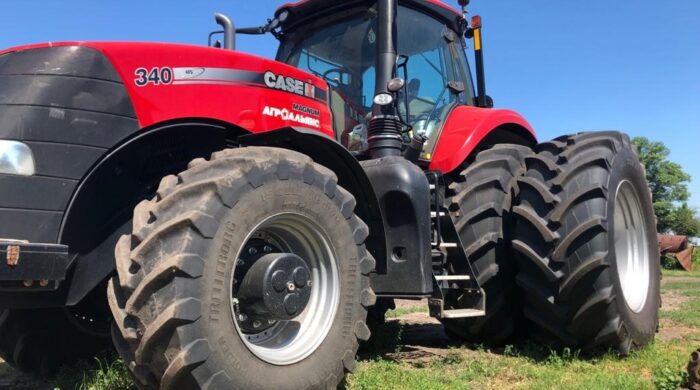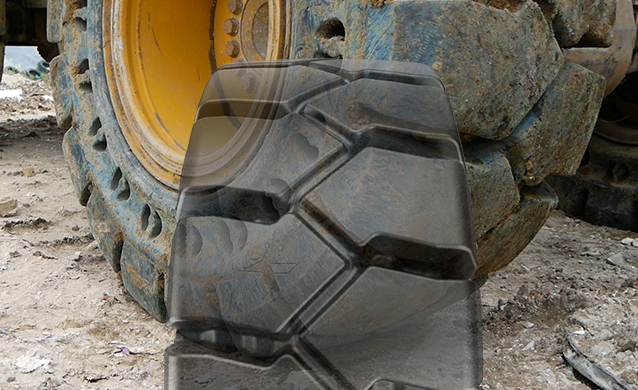MAXAM on Tire/Wheel Conversion
AG Technical Bulletin – When should grower consider Tire / Wheel Conversion
As the Ag industry has evolved from animal driven to 2WD tractors to mechanical front-wheel assist tractors (MFWD / MFWA), tires have also evolved in design, materials, functionality, and performance. Ag practices around the world differ based on crops grown, soil conditions, moisture content, and environmental conditions. In order to provide solutions that are flexible to an evolving global market, the equipment manufacturers or OEMs offer their machinery with tires of different diameters or widths for the same machine to adapt their equipment to the specific needs of that grower or crop. One of the key tools that are used to adapt or convert tires from crop to crop or grower to grower is the RCI or rolling circumference index. The RCI is the rolling circumference or the distance a tire travels in one revolution. The advent of powered front axle tractors or mechanical front-wheel assist/drive (MFWD) tractors to provide more power (torque) to pull implements in the field requires a clear understanding of the RCI impact. The smaller front tires must travel faster to stay in the same ratio or time that the larger rear tires travel as they roll. In other words, the front tires will turn more times as the tractors move forward for every rear tire full revolution.

Each MFWD tractor must maintain a balance between “positive slippage” or front tires pulling, and “negative slippage” when the front tires are slower or lagging therefore resisting the push from the rear tires. This balance is the tractor gear ratio also known as, “the lead or lag ratio”. As a rule, the “ideal” tractor gear ratio between the front axle and the rear axle (IAR or Inter-Axle Ration) ranges from 1.2 to 1.5. For the front tires to pull successfully and produce the right amount of pulling power with the right “slip” to stay within the tractor gear ratio, the proper tire slip needs to be between 1% to 5% = “positive slip”.
If you have too much positive slip ratio (above 5%) you will have “excessive” work by the front tires pulling the rear tires equates to a loss of efficiency and higher fuel consumption. If you have a “negative” slip result, the front tires will experience a braking effect that creates a loss of pulling power, more fuel consumption, and reduced steering capability. Each OEM publishes their recommended Gear Ratio for each model MFWD or MFWA tractor they manufacture. Tire manufacturers should provide their tires’ rolling circumference (RC) or the RC Index (RCI) values in their published product data to allow growers to calculate the right size tire fitment from front to rear for their equipment to ensure the right amount of positive slippage or pulling power for the given gear ratio.
The Front to Rear Gear Ratio Tire Slippage Calculation is as follows:
(Front Tire RC x Tractor OEM Model Gear Ratio) / Rear Tire RC) – 1) 100 = Slip %
MAXAM publishes in our Ag catalog both the tires rolling circumference and the tire RCI value to assist growers in ensuring the tires chosen for their equipment can operate within their MFWD gear ratio limits or needs. Growers, at times, will also consider changing tires by either selecting a bigger tire combination or width to improve their traction, flotation, or pulling capability. Below is the MAXAM example of tires having similar diameters but different widths within the same RC or RCI to determine what is the best tire size suited to meet their field or crop production needs. Using the above equation and the RCI data, as well as the OEM tractor gear ratio, any grower can quickly determine if their equipment will allow switching or evolving to larger tires without compromising their required gear ratio slip rate percentage.

The MAXAM Ag tire catalog provides our tires’ RC, RCI, and diameter specifications, to assist growers in determining any technical information necessary to support their equipment needs or potential tire size evolution. MAXAM Ag tires are designed to deliver an optimized footprint ensuring the best possible traction and flotation for the grower’s vehicle needs. MAXAM’s Agrixtra family of tires delivers a performance solution tailored for the Ag industry.



